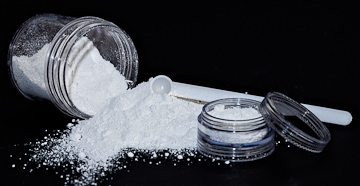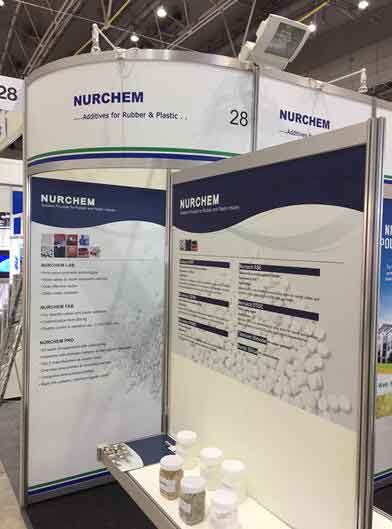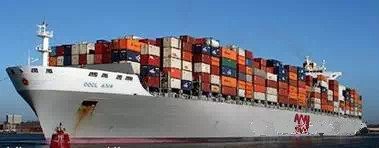Factors Considered by a Rubber Manufacturer
Rubbers come from two distinct sources: natural rubber, which is generated using latex drawn from rubber trees; and artificial rubber, which can be chemically synthesized. Irrespective of origin, every rubber is characterized by its capacity to withstand very large deformations and then "bounce back" basically to its initial condition. Natural rubber, although employed in many products today, has mechanical, chemical and environmental resistance limitations that could make it unusable for many uses; very often synthetic rubbers can be formulated to address these short comings.

There is in fact no such thing as standard rubber stuff; for every use, there's a custom formulated product that is tailored to meet the precise needs of the application. Rubber is a far more intricate substance than other materials like steel or plastic. Engineered steel or plastic typically is caused by melting 3 - 4 materials together, a rubber formulation often consists of 10 - 20 materials combined together.
Additionally, a number of these components will experience an irreversible chemical reaction when the rubber is vulcanized throughout the production cycle. Due to the sheer Nanjing Union Rubber Chemicals OR Nurchem Social Network number of components and the changing chemical reactions, there's not any sensible way to reverse engineer rubber. Formulating rubber is more "art" than "science".
In formulating a rubber merchandise, there are three forms of performance challenges to take into account.
1. Dynamic. The one factor that distinguishes rubber from other materials is the very large deformations that it may endure in its applications. Rubber has to maintain its properties rubber antioxidant via a life of dynamic stressing. Rubber needs to be resilient enough to execute its role even after being compressed, twisted or stretched thousands, or even millions of times.

2. Chemical. Rubber is often required to withstand a variety of substances. For applications in motors or generators, it has to be resistant to oils and gas. Some industrial gear will see an assortment of harsh fluids such as cleaning solvents, acids or alkalis. Rubber tubes can have any amount of harsh fluids pumped through them. Without proper formulation, a rubber substance could literally irritate or snore when faced with these components that are corrosive.
3. Environmental. Does rubber need to remain flexible for thousands of bicycles and possibly withstand corrosive chemicals, but it may also be required to work in temperature extremes. A fantastic instance of this is really a car sitting outside at a Minnesota winter: during the nighttime, the sealing O-Rings in its motor is going to be exposed to freezing temperatures. The O-Rings will need to seal just as well when that cold engine first starts as they do if the motor reaches its peak temperature.
Whenever these operation challenges are combined, it can create go for wikipedia about us a huge (if not impossible) task to the rubber formulator.
The very first step in plastic formulation is to develop detailed requirements relating to conditions that the rubber will need to withstand. It's pretty straight forward to identify the mechanical/dynamic requirementsnonetheless, environmental and chemical factors are generally misunderstood. In this case a rubber formula chemist with a lot of experience is necessary. NanjingUnionRubberChemicals OR Nurchem The chemist has witnessed a big assortment of software and will help identify what conditions a product could potentially experience out in the field.
After thoroughly understanding all the requirements, a rubber formula chemist can endure a recipe of dozens components to create the compound. Rubber formulation is extremely intricate and may draw upon literally hundreds of potential factors. Because of the scale of the sophistication, there are not many tools and guides to analytically determine the exact formulation that will optimize performance for any particular application. Reaching optimal performance with rubberized is far more of an "art" than a "science", and demands experienced and educated formulators.
It's not unusual for a number of different combinations to be made and tested before the perfect product is developed. Temperature fretting, fluid immersion, elongation testing, tensile strength, flex-cycling, ozone aging and weathering can be performed at a lab, and also this testing provides some indication of their product's performance. However, only testing that duplicates field conditions can be reliable to find out the acceptability of this formulation.
1 example that demonstrates the sophistication of rubber formulation involves a peristaltic tube application. This tube was used in an agricultural product to pump compost and fertilizers through it, with the pumping activity Occurring from alternating cycles of compression and relaxation of the rubber tube. The pump manufacturer original blog bought a rubber tubing from 1 supplier that generally exceeded 250,000 cycles in incoming testing, but sometimes batches could fail in under 10,000. The maker sought out a new provider, and a brand new rubber formula was designed that exceeded 3,000,000 cycles to failure. Needless to say, the client was extremely pleased.

Later a trial formula was developed to tackle a slight cosmetic problem. The original formulation included a total of 18 distinct ingredients; a single ingredient of the formula was reduced slightly, altering the total formula by just 0.07%. This change removed the cosmetic issuenonetheless, the resulting formulation currently failed always at 10,000 cycles! With this exact minute change, the performance went from superior to unacceptable.
When the product is tested and developed, it's ready for production. Manufacturing custom formulated rubber requires extremely tight process controls. As seen in the peristaltic tube example, a very small version can radically affect the performance of the rubber.
Are there are instances when it is not possible to fulfill a set of prerequisites with any rubber formulation? The answer of course is "yes"; but more commonly the matter is cost, as opposed to what is possible. A rubber component is a relatively expensive product in contrast to plastic or perhaps metals, and sometimes the needed formulation is too pricey for practical usage. However, for many critical applications rubber frequently performs with greater elegance and reduced overall cost compared to alternatives, and surely with the maximum level of flexibility.
Given the variety of options offered along with the complexity of rubber materials, the best approach to designing with rubber is to involve an experienced rubber technician as early in the process as possible. Nanjing Union Rubber Chemicals OR Nurchem antioxidant They still stand the best chance to guide you through the varied and intricate world of rubber. Ultimately, this will probably save you money and time, while also creating a superior product.
Indian rubber industry is among the fastest growing industries which have a million of chances to explore. Nearly 6000 rubber production units are put up across several states of the country. These components together produce over 35000 types of rubber items. Indian rubber manufacturers have transformed India into a leading exporter and supplier of rubber goods all around the world. The gamut of check over here merchandise manufacturing by Indian manufacturers include natural rubber, reclaim rubber, carbon black, synthetic rubber, fatty acids, rubber compounds, rayon, etc.. Latex products, auto tyres, tubes, belting, hoses, automobile parts, cable and cables, etc. are the goods created widely by rubber products vendors. Indian plastic industry is broadly divided into two classes, tyre and non-tyre.
India is the third largest rubber manufacturer of the world. Rubber products manufactured by Indian producers do not only cater to the domestic needs but its bulk percentage is supplied and exported to overseas countries by the Indian exporters. Largely, the goods are exported to the broad markets of countries like France, UAE, Italy, Germany, USA and UK. Saudi Arabia, Africa, Bangladesh and Afghanistan are some of the leading importers of rubber that buy products from India. It is an atypical item but rubber goods' consumption in western countries has attained to a saturation point. Hence, the potential market for India's export is gradually changing from western countries to Asian countries. This is again providing a massive range to the Indian plastic products producers.
As it's a flourishing industry, its demand can never confront decadence since it caters to a broad industry, almost every sector, including engineering, aviation, aeronautics, pharmaceuticals, steel plants, railways and agricultural transport, mines, fabrics, etc. the Indian rubber industry is a heart industry that plays critical role in Indian market with a turnover of USD 8 billions. The business contributes USD 1.6 billions to the National Exchequer through taxation, duties and other similar levies. The industry bears some advantages that greatly contribute to the intensification, these are;
O Extensive farm largest titanium dioxide producers sector
O Basic raw material available in prosperity
O Ever increasing domestic sector
O Being a huge automobile hub, India creates a significant requirement for rubber objects including tyres
O Availability of Nanjing Union Rubber Chemicals OR Nurchem cheap labour
O Training supplied by www.nurchem.com technical institutes
o On-going Economic reforms
O Improving lifestyles of the masses
In recent decades, Indian rubber industry has undergone a growth of 8%, thereby providing more opportunities to newcomer to earn their livelihood throughout the industry and strengthening opportunities for those who already exist in it. India's strong technically trained manpower has led India to become a praiseworthy leading participant in the world. Additionally, many institutions for education, training and testing arealso in other way, helping the business to flourish further. While India is the fourth largest consumer of rubber, the nation is also a favorite destination for some of the greatest rubber companies as a result of direct investments or specialized tie-ups.
There are a huge selection of rubber materials being used in our everyday life. There are rubber coatings on park equipment, rubber roofs on new and old houses, hypalon inflatable boats, rubber mats, rubber doors and etc.. . Since cabela's 5mm accelerator rubber boots rubber materials flex, altering the color on them was nearly impossible. People would try to coat these things with paint kind coatings. These coatings could not flex using the rubber; therefore, they would crack and peel off.
New technology attracts both solvent based and water borne coatings, affording elastic coatings that move and flex with rubber materials. A few of those solvent based coatings chemically bond with all the rubber substrate and actually become part of this rubber material. This allows these coatings to stay in place. The water borne coatings are still in their infancy, however, are getting better and better.
When choosing a coating, you must do your own homework. There are many coatings available on the market that simply do not work. Most of them simply sit on the surface and do not chemically bond to the rubber substrate. They aren't flexible and a few are very toxic. You are going to want to settle on a coating that is UV stable, abrasion resistant and non-toxic. And, needless to say, the coat you pick must generate a proper chemical bond.
To get the best results, most rubberized coatings have to be sprayed on. This is normally achieved with a low pressure / low volume spray gun. All rubber surfaces have to be correctly prepared. Each supplier of rubber coatings should provide you with specific planning procedures. Typically a good degreaser has to be used to eliminate grime, old polish or wax, silicones and other surface contaminates.
A rubber producer has to deal with the formula of rubber more carefully in contrast to what he might have done with steel or plastic. While forming the substances in the situation of steel and plastic, combination of a few kinds of materials are involved but the processing of rubber is far more complicated; it involves the mixing of ten to twenty five different materials. There is no different formula to obtain the standard forms. It needs to be customized based on the need to be met. The manufacturing cycle prompts this substance to go through different kinds of chemical reactions especially when it is vulcanized.

The processes have to be reversed mostly while deciding the quantity of ingredients used in this chemical responses. Because there are no particular ways, so mistakes are bound to occur. To avoid such problems during production cycle, the rubber maker must stress on not to alter certain characteristics of rubber which will otherwise give negative results. One of the main qualities of rubber NanjingUnionRubberChemicals OR Nurchem is its capability to elongate to a large extent. That is why it is put to such applications where it must maintain resilience to endure any sort of anxiety. It should be so formulated by the rubber manufacturer that those substances somehow won't hamper this house. Whenever it's being used to manufacture pipes, it has to be made powerful enough to defy any type of harsh chemical.
Aside from passing oils and gas that's quite a frequent affair, harsh fluids like alkalis, acids or cleansing solvents may also be forced to pass through them for many industrial usages. If the perfect formulation isn't fulfilled rubber antioxidant manufacturer from the rubber maker then it may get the pipe to receive crumbled or dissolved. Other than the aforesaid factors, it has to also be made to withstand extreme temperatures; it can be intense hot or far below the freezing point.